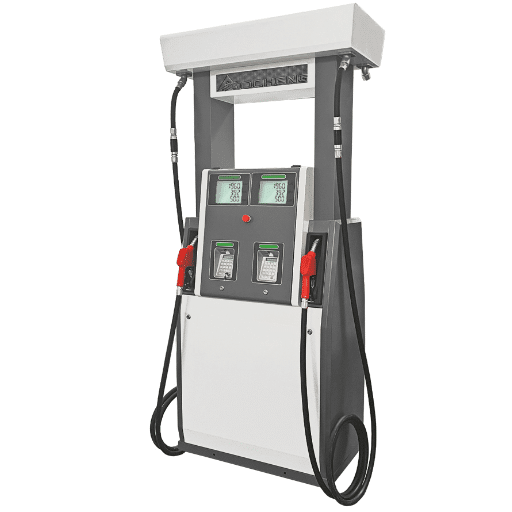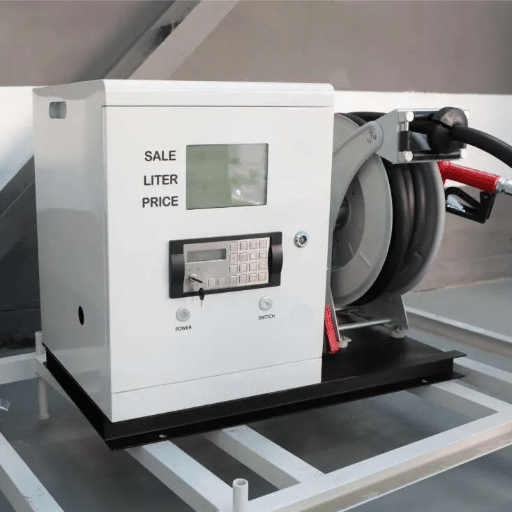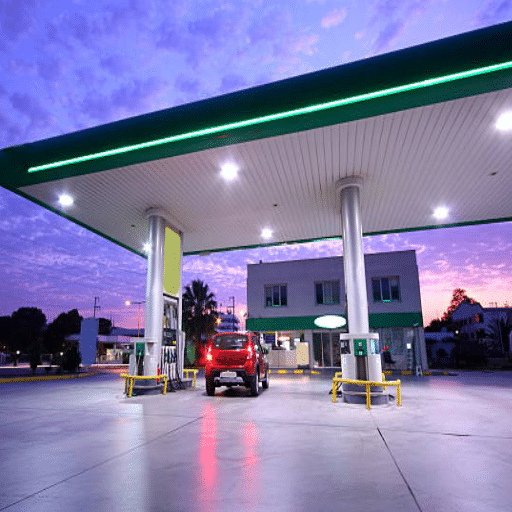Material selection for storage tanks is one decision that significantly affects lifespan, safety, and eventual performance. There are so many types of metals that it becomes quite confusing to identify the right one for your needs. Corrosion resistance, mechanical strength, and cost-effectiveness should be factors when picking the metal for any chemical storage, water containment, or industrial process. This article will take you through the essential criteria in metal selection for storage tanks and popular choices in the market, and help you pick the most reliable and cost-effective solution for your application.
What Materials Are Used for Storage Tanks?
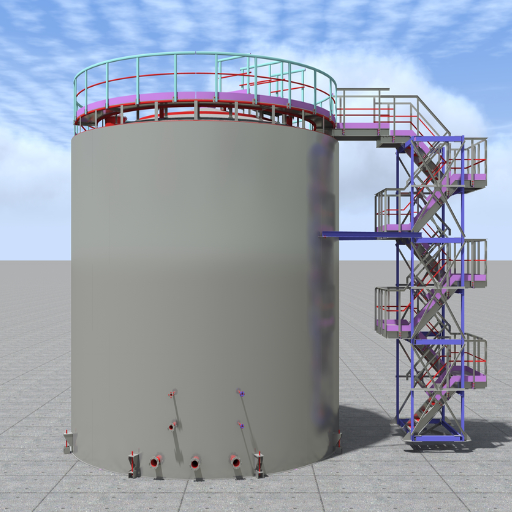
Steel, stainless steel, aluminum, or polyethylene can be used to make storage tanks. Steel is selected for its strength and durability, making it suitable for large-scale or industrial use. Stainless steel has corrosion-resisting capacity, especially appropriate for chemical or food-grade substances. Lightweight and corrosion-resistant aluminum is usually preferred for portable and smaller tanks. Polyethylene is an inexpensive material resistant to many chemicals and commonly used to store water and other chemicals. The material depends very much on the compatibility with the contents and the nature of the environment.
Factors Influencing Materials Used in Storage Tanks
The selection of materials for storage tanks depends on various crucial factors, including chemical compatibility, weather conditions, cost issues, durability, and safety regulations.
Chemical Compatibility: Materials react differently with chemicals. For example, stainless steel is highly corrosion resistant and is often used to store acids or other reactive substances. Studies indicate that when used for corrosive chemicals, stainless steel tanks may last many decades. Polyethylene, a rigid plastic, is excellent for storing non-reactive chemicals such as fertilizers, liquid detergents, or water since it is highly resistant to acid and alkali attacks. However, such materials might not work in storing solvents or fuels, as some plastics degrade.
Environmental Conditions: The external environment also influences the material selection. Polyethylene and aluminum, which are reflective against UV rays, are usually preferred for outdoor tanks. For example, aluminum melts at around 1,221°F (660°C) and is subject to minimal degradation, even with extreme temperature changes. Underground tanks usually require reinforced steel or fiberglass, as these materials cope well with pressure from soil and groundwater.
Durability and Longevity: Industrially considered tanks usually require materials with an extended life span to minimize cost implications on replacements. Stainless steel tanks, for instance, have high-temperature resistance and retain their integrity under stress, making them suitable for pressurized storage or contents of high-temperature applications. Research findings state that well-maintained steel tanks may last 25 to 50 years, depending on the environment and usage.
Cost Considerations: The amount of money available for tank erection and maintenance also affects material selection. Polyethylene, generally the least expensive material in weight-light discussions, costs much less than metals like stainless steel or aluminum. Materials that offer a longer lifespan, such as stainless steel, may lessen costs in the long run, especially where chemicals are stored frequently in an industrial setting.
Safety Regulations and Industry Standards: Various industries, including pharmaceutical, foodstuffs, and petroleum, require strict safety standards when selecting tank materials. Stainless steel generally constitutes the material of choice when the food industry requires FDA approval to store food-type products (including beverages). Similarly, polyethylene tanks are meant for chemical storage, maintaining safe toxicity levels outlined in industry safety guidelines.
Carefully evaluating these ensures the selected material will render the best service possible, fitting its intended use and regulatory requirements. Likewise, newer developments in material engineering, such as HDPE and corrosion-resistant alloys, continue to increase the modern storage industry’s options.
Common Types of Metals Used in Storage Tank Manufacturing
The choice of metals for storage tank manufacturing depends mainly on the substance to be stored, treatment conditions, and durability requirements. Among the commonly used metals are the following:
Stainless Steel: Being a medium for corrosion resistance and high tensile strength, stainless steel is suitable for storing or holding chemicals, water, and food products. It is strong enough to ensure the safe storage of materials even under extreme temperature conditions or treatment.
Carbon Steel: Carbon steel is widely used because of its cheaper price and greater strength. It is transparent mainly to oil, gas, or non-corrosive liquids storage tanks. It needs some form of coating or lining on its surface to avoid rusting and prolong its life.
Aluminum: It is lightweight and corrosion-resistant, so it is used in cases where lightweight is a concern. It works well for relatively minor tanks or those part of a transportable system, but it may not withstand highly corrosive substances.
Thus, they are selected for their peculiar properties across the cost-performance spectrum to suit the application.
Why Fiberglass Tanks Are Often Used
Due to their unique combination of durability, corrosion resistance, and cost-effectiveness, fiberglass tanks have enjoyed a surge in popularity. Made from glass-reinforced plastic (GRP), these tanks are built not to degrade easily in the presence of chemicals, moisture, or extreme environmental conditions. Hence, they have pitched themselves as the storage solution across any industry that handles highly corrosive materials, like wastewater treatment or chemical processing.
Fiberglass tanks stand out against their metal competitors because of their lightweight design. This translates to easier handling and installation, making the process less expensive. Being rust-free, fiberglass ensures long-term reliability and diminishes maintenance requirements. It is estimated that, with proper care, these tanks will last more than 30 years, far beyond the useful life of some other materials.
Besides, fiberglass tanks can be custom-made to various industrial specifications. They can come in different shapes, sizes, and configurations, allowing for specific needs. Plus, their insulating effect lends them well to handling temperature-sensitive substances, with less chance that outside temperature will cause an impact.
Because these fiberglass tanks are great performers at reasonable prices, they are increasingly becoming a preferred option within numerous industries. With the improvement in manufacturing technology, the tanks have grown in quality and environmental friendliness, thus retaining the status of a preferred storage solution.
Why is Stainless Steel a Popular Choice for Storage Tanks?
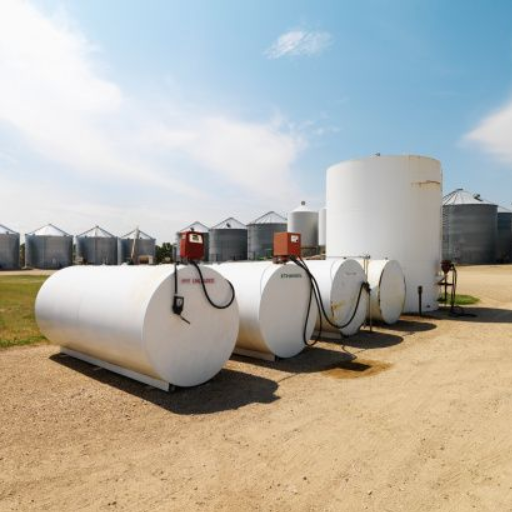
Because of its superior durability, corrosion resistance, and long life, stainless steel is a choice for storage tanks. The material does not react with chemicals, water, or food products, and hence can store almost anything. Stainless steel is also easy to clean, which is significant in maintaining hygiene standards for food processing and pharmaceutical industries. Its adaptability is increased by resisting temperature extremes and diverse environmental conditions, thereby warranting greater use and efficiency in performing many storage functions.
The Benefits of 316 Stainless Steel
Today, stainless steel is well known as one of the most versatile and durable materials. One of its advantages centers on its corrosion resistance, especially against chlorides and aggressive chemicals. This would thus make it perfect for marine environments, chemical processing plants, and industries exposed to salty or acidic conditions. Research has established that 316 stainless steel exhibits high resistance against pitting and crevice corrosion compared to 304 stainless steel, mainly due to molybdenum, which usually constitutes 2-3% of its composition.
Being a tough and highly durable metal, 316 stainless steel carries its weight well even in extreme hot or cold temperatures without compromising structural integrity. Its dependability translates to industrial storage tanks, heat exchangers, and medical equipment. Its non-magnetic properties and relatively easy fabrication only make it more versatile.
Data also suggests that 316 stainless steel meets high hygiene and cleanliness standards. It is non-porous and resistant to bacterial growth, critical in food processing, pharmaceutical manufacturing, and healthcare sectors. This makes it meet stringent sanitary requirements and lowers the cost of upkeep.
Overall, 316 stainless steel offers unmatched performance in terms of safety, durability, and cost-effectiveness, especially in more demanding settings. Its amalgamation of mechanical strength versus undesired environmental forces makes it a crucial material in various industrial and commercial applications.
Comparing 304 Stainless Steel to Other Types
When compared to differing steel grades, 304 stainless steel is famed as a middle ground between affordability, corrosion resistance, and mechanical properties. Although it is referred to as 18/8 stainless steel, with its 18% chromium and 8% nickel-containing composition, 304 stainless steel is commonplace and, hence, sees applications everywhere from kitchen utensils to industrial machines.
316 stainless steel stands as a significant comparison. While both are austenitic grades and almost have the same tensile strength, 316 possesses a high resistance to chlorides and harsh environments due to its 2 to 3% molybdenum content. For example, 316 stainless steel would be chosen wherever marine environments or applications with exposure to saltwater are inevitable, while 304 is perfectly adequate for low-corrosion environments.
304, compared to lesser grades such as 430, offers higher corrosion resistance and ductility, thanks to the elevated levels of chromium and nickel. 430, by contrast, being a ferritic grade, is relatively cheaper and magnetic, thus ideally suited for decorative or low-pressure situations where abrasion resistance would not be required.
Within the price range, 304 is Massachusetts’s highest-cost compared to 316 and favors general applications. However, 201 stainless steel is an alternative that has an even lower cost range than the former due to decreased nickel content, which significantly detracts from corrosion resistance and durability.
Tests state that 304 stainless steel can withstand temperatures from 870°C (1600°F) without compromising its structural integrity, thus setting it apart from some lower-grade types. Its excellent weldability and non-magnetic character during its annealed phase give it added advantages in many industrial applications.
The main reason is that 304 stainless steel is suitable for money, rendering it the most widely utilized stainless steel in diversified industries. The support for various sectors is that other types can serve the need if a particular environment demands them. However, 304 stainless steel gives a broader spectrum of reliable applications without compromising quality.
How Stainless Steel Offers Durability
Stainless steel’s remarkable mechanical properties and environmental resistance make it durable. Durability comes from chromium, primarily due to the formation of a passive layer of chromium oxide on its surface, protecting it from rust and corrosion. For instance, stainless steel containing chromium over 10.5% offers good resistance against oxidation in many environments, including moist and humid conditions.
Heat resistance is another major factor in its high durability. High-grade stainless steel, such as 316 or 304, can maintain structural integrity and resist scaling at elevated temperatures up to 1500°F (815°C), thus easily achieving applications in industrial equipment, kitchen appliances, and aerospace components.
Besides, stainless steel has excellent strength-to-weight properties, ensuring it will perform well for a long time if subjected to heavy loads or mechanical stresses. Research implies that stainless steel structures, properly looked after, can remain for more than 50 years, significantly lowering the costs for maintenance and material waste. Lastly, it is recommended further based on its sustainability: presumably recyclable.
How Does Corrosion Affect Water Storage Tanks?
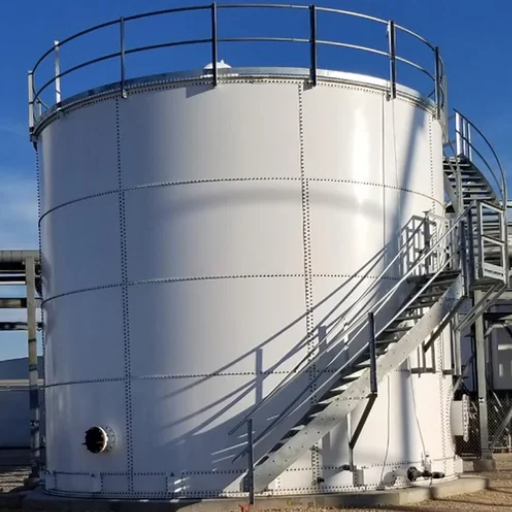
Corrosion is a strong force influencing water-storing tanks by weakening their ability to stay structurally sound and thus reducing their life. Rust and corrosion could lead to permeability, contamination of water inside, and the need to repair or replace the tank. On the other hand, longer exposure to corrosion would finally damage the liners or coatings. This would further expose the tank surface to corrosive attack. Appropriate application of materials, simple maintenance, and protective coatings on tanks would reduce such risk and help water storage tanks work safely and efficiently.
Understanding Corrosive Environments
Corrosive environments are those having chemical agents or environmental factors, owing to the accelerated natural degradation of materials. The action of humidity, temperature, salinity, certain chemicals, or other pollutants may influence these environments. For instance, very high atmospheric salinity near the coastal areas causes metals to corrode much faster as the salt is carried by air. According to recent studies, corrosion in coastal or corrosive environments may lead to a 30-50% increase in the rate of metal deterioration, compared with their inland counterparts.
Industries on the extreme side of the spectrum, such as the oil and gas industry, frequently see corrosive elements such as hydrogen sulfide and carbon dioxide. These elements cause enormous material degradation if such degradation is not properly controlled. According to a report from corrosion control associations, the global cost of corrosion is reckoned to surpass $2.5 trillion annually and spans the construction, transportation, and energy industries.
Different solutions for corrosion in corrosive environments are considered, including corrosion-resistant alloys, coatings, advanced maintenance technologies such as cathodic protection, and other methods. Continuously monitoring environmental parameters such as humidity and pH levels for the period of existence could also provide a strong standpoint for predicting damage, initiating preventive measures, and ensuring on-the-road performance and asset integrity.
Ways to Protect Against Corrosion
Use of Corrosion-Resistant Materials: One of the most effective interventions is choosing materials specifically for corrosion resistance. Steel, stainless steel, aluminum alloys, and titanium are commonly used in various industries due to their resistance to oxidation and chemical reaction. Considerable progress in material sciences has led to new composites and nanomaterials that provide superior service life and corrosion protection.
Protective Coatings: Protective coatings, including paint, galvanization, and epoxy, are applied to materials as a barrier against the environment. Zinc coatings from galvanization have been claimed to extend the life of steel 10-to-15-fold in some environments. The development of polymer coatings in recent times has improved resistance to moisture ingress, chemical attack, and UV rays.
Cathodic Protection Systems: Cathodic protection remains one of the protective techniques widely used in pipelines, marine vessels, offshore structures, etc. This electrophysiological process rewires the electrochemical corrosion reaction using sacrificial anodes or impressed current systems to slow down or prevent corrosion. Thus, the service life of infrastructure could theoretically be extended by decades, provided such a device is properly maintained.
Environmental Control: The action step is reducing moisture, salt, and pollutant concentration through ecological control measures. Temperature, dehumidifiers, and environmental enclosures are environmental control techniques. The data indicate that reducing relative humidity below 60 percent can slow carbon steel corrosion rates.
Maintenance and Inspection Schedules: Frequent inspections and upkeep efforts are maintainable practices to spot early corrosion development. The advent of technology is transforming maintenance strategies using ultrasonic thickness gauging, drones, and AI-powered detection systems, all of which deliver accurate data and reduce the costs of manual supervision.
Corrosion Monitoring Systems: Implementing corrosion monitoring systems in industries ensures real-time tracking of environmental changes, such as pH value, chloride concentration, and temperature changes. These systems enable operators to anticipate potential risks and take corrective actions beforehand.
Allowing a combination of some of the above approaches will lend better corrosion control and mitigation by industries, thereby enabling extended service life and reliability of critical assets, not to mention the reduction of costly repairs and downtime.
The Role of Chromium in Corrosion Resistance
Chromium is vital in enhancing corrosion resistance in stainless steels and protective alloys. When the alloy contains enough chromium—at least 10.5 wt.% chromium in stainless steel—it interacts with the oxygen in the environment to develop a more or less tenacious chromium oxide film on the material’s surface. This passive oxide film acts as a protector to prevent adverse environmental attacks, such as those from moisture, oxygen, or various chemicals.
One key feature of chromium corrosion is self-healing. Whenever the passive film gets scratched or physically damaged, it restores itself rapidly with oxygen, keeping the material from rusting or degrading. The corrosion resistance provided by chromium oxide films becomes significant in more severe environments, such as marine environments or industrial plants exposed to chlorides, acids, and high temperatures.
An increase in the alloy’s chromium level has been found to increase its resistance to pitting and crevice corrosion, especially when combined with others such as molybdenum and nitrogen. For example, duplex stainless steels with chromium and molybdenum have the best corrosion rates in chloride-rich environments, making them suitable for offshore oil rigs, chemical processing, and desalination plants.
It has also been reported that chromium-enriched coatings on carbon steel and other metals drastically reduce corrosion rates. These coatings, therefore, find wide use in protective applications in aerospace, automotive components, and infrastructure, respectively, providing very cost-effective means for enhancing the lifespan of materials.
Hence, considering chromium’s unique properties and adaptability to a wide range of alloys, the element helps avert corrosion in almost all industries for safety and long-term use.
Are Steel Tanks Durable for Long-Term Use?
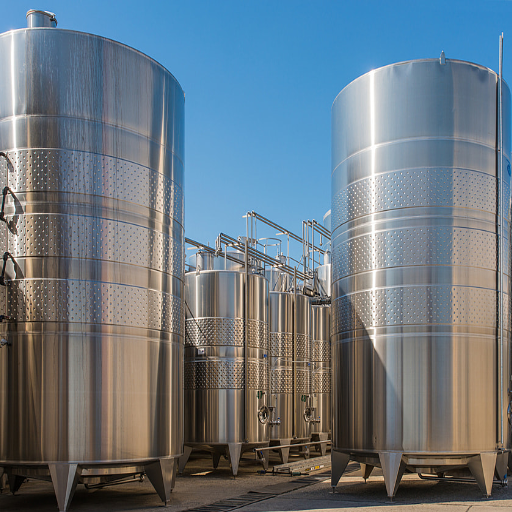
Steel tanks are durable for long-term use when properly designed, maintained, and protected. They are strong and resilient, resisting environmental harms, making them suitable for long-term storage and use in various industries. Protective coatings or treatments, such as galvanizing, are often applied to maintain the tank’s durability. Regular inspection and maintenance are required to maintain performance and structural integrity over time.
The Durability of Carbon Steel
Industries, including construction, manufacturing, and transportation, widely use carbon steel for its strength and rigidity. Its wearability is mainly affected by composition, adding carbon imparts stiffness, while further alloying elements improve wear resistance. When surface coated, such as with galvanization of epoxy, carbon steel gains further resistance from corrosion and is therefore usable in environments with environmental hazards for a long time.
Recent studies reveal that carbon steel can sustain tensile stresses and usually offers tensile strength between 580 and 1,700 MPa, depending on the steel grade. The material also holds up well at high temperatures, providing dependable structural performance during elevated and freezing conditions. This has kept it at the forefront as a favorite among designers for critical infrastructures such as bridges, pipelines, and heavy-load machinery.
Carbon steel remains highly resilient in fiercely aggressive environments, provided it is allied with corrosion inhibitors or thermal coatings. Research proves that carbon steel, treated with protective methods, can last decades even in moisture-laden or industrial environments. With periodic inspection and maintenance, carbon steel remains one of the few inexpensive and durable building materials.
Comparing Steel Water Storage Tanks to Alternatives
Water storage matters tend to lean towards steelacious water tanks being touted for durability, longevity, and cost-efficiency. Steel has many high points to boast about compared to fiberglass, polyethylene, or concrete tanks.
Durability and Strength: Steel water tanks generally enjoy higher strength and robustness against force. Polyethylene tanks sometimes warp or crack under pressure, while steel stands tall against high pressure and harsh environmental conditions. A concrete tank, though strong while being laid, crumbles through cracks in the walls, demanding costly repairs, whereas steel tanks can maintain their integrity for decades if properly treated.
Lifespan: A galvanized or stainless steel tank will be manufactured to resist corrosion, as corrosion is the leading cause of tank degradation. Although fiberglass does resist corrosion, it goes through a quicker deterioration process due to brittleness and problems that can occur during installation. Researchers state that tubular steel water storage tanks could last 30 to 50 years in environmental park settings with adequate upkeep and maintenance, making them perfect for long-term storage.
Inexpensive: Although initially more expensive than polyethylene and fiberglass options, steel water tanks offer good savings in the long run. Fewer maintenance factors accompany the long life of steel tanks, which translates into significant cost savings. In addition, using recycled steel makes the process more sustainable and may bring down its manufacturing costs accordingly, resulting in profit for the environment and the economy.
Preservation of Water Quality: Steel water tanks are strongly resistant to contamination of potable water when lined with food-grade protective coatings. Timber or polyethylene tanks may leach harmful contaminants into the water or, through degradation with time, compromise water quality. Hence, steel is preferred for agricultural, municipal, and industrial use.
Scalability and Customization: Steel tanks provide more freedom in size and capacity, from small domestic setups to large industrial systems storing millions of gallons. Though concrete tanks can carry out similarly significant functions, they are often more cumbersome to transport and install. Steel-related handy qualities allow tanks to be manufactured and tailored to site—and application-specific requirements.
With these factors considered, steel water storage tanks are somewhat robust, more durable, and more environmentally friendly storage structures than tanks made of any other material. Their usefulness and durability in harsh conditions continue to render them a choice in various fields.
Why Steel Offers a Long-Lasting Solution
Steel tanks are known for their unparalleled durability and strength. They are often considered the perfect long-term water storage facility. They are made to withstand heavy rains, high winds, and seismic situations. Steel’s inherent anti-corrosion character, combined with a proper protective coating of epoxy paint or galvanization, gives them a much higher lifetime than plastic or concrete tanks.
Studies reveal that when maintained well, steel tanks can last for over 50 years, rendering them a reliable and cost-effective investment. Strong in tensile qualities, steel tanks can withstand extreme pressures and heavy loads, thus making them suitable for industrial use. Being a completely recyclable material, steel also promotes sustainable efforts and lessens environmental impact during its lifetime. All these factors substantiate why steel remains an aging yet reliable vanishing solution for having water in various industries.
What Makes Stainless Steel Water Storage Tanks Hygienic?
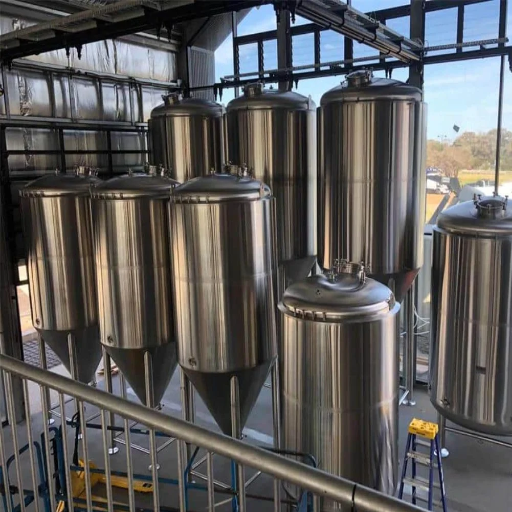
The stainless steel water storage tanks maintain hygiene since their non-porous surfaces do not allow for bacterial growth, mold, or other forms of contamination. Stainless steel is also corrosion-resistant, resistant to rust, and contamination from water. Its waterproof nature impedes block leaks and chemical interaction with the water, maintaining the stored water’s quality and safety throughout time. These characteristics form a stainless steel tank, an unabashedly secure and healthy water storage method.
The Importance of Hygienic Water Storage
Hygienic water storage remains critical to safeguarding public health and providing clean and safe drinking water. Recent data shows more than 2 billion people worldwide without access to safely managed drinking water services, stressing the need for water storage methods that work. If a storage system is inadequately maintained, it will become contaminated with harmful pathogens, including bacteria such as E. coli. These pathogens become dangerous when they cause cholera, diarrhea, wheezing, or hepatitis.
Hygienic water storage, either in a stainless steel tank or sealed plastic containers, safeguards against contaminants that might mess with water purity. Research shows that proper storage reduces the risk of waterborne diseases by 50 percent in areas with limited water treatment infrastructure. Storage systems should also be cleaned regularly to prevent biofilms from forming, which can harbor microorganisms capable of degrading water quality.
Suppose communities observe proper hygiene standards and invest in durable, high-quality materials for water storage. In that case, they will have fewer health-related risks and more guaranteed water delivery for household consumption, cooking, and sanitation. This, in turn, improves health outcomes and sustains the management of this critical resource.
How Stainless Steel Water Tanks Resist Contamination
Stainless steel water tanks resist contamination owing to their non-porous surface, preventing bacteria and biofilm growth. Due to their corrosion-resistant properties, they do not leach any harmful substances into the water, which further maintains its purity in the long run. They are also easy to clean and resilient, making them a long-term solution for storing safe water.
The Role of Weld Quality in Maintaining Hygiene
Weld quality is essential for ensuring the hygiene of stainless steel water tanks, particularly concerning contamination and clean water. When high-quality welding is employed, no crevices or gaps are formed wherein bacteria, mold, or other harmful organisms can thrive. Such smooth, seamless welds ensure a uniform surface, rendering the tanks easily cleanable with a low chance of biofilm development. On the other hand, poorly welded joints might lead to uneven surface scenarios that are more prone to corrosion and microbial growth.
Studies have shown that tanks with advanced welding methods face fewer defects. For instance, with the advanced TIG (Tungsten Inert Gas) welding technique, one can produce weld seams that are purer than any other weld and satisfy stringent hygienic requirements codes. Some industry seminars also mention that tanks with better welding methods fare 80% better in inhibiting bacterial growth than those with poorer welds. Such considerations become critical in the food industry and hospitals, where contamination can be catastrophic.
Proper weld quality also enhances the life expectancy of stainless steel tanks. Good welds make the tank structurally sound from a corrosion resistance and leakage standpoint. This helps with better water quality and saves money in the long run because tanks do not require replacement or repair very often. Therefore, weld quality is vital for potable water’s safe and efficient storage.
Reference Sources
Hydrogen Energy Storage and Applications
Testing Jordanian Materials for Hydrogen Storage
La-Ni Alloys for Renewable Energy Storage
Frequently Asked Questions (FAQs)
Q: What are the most common materials used to manufacture storage tanks?
A: Steel, concrete, and fiberglass are the most common materials for manufacturing storage tanks. Steel storage tanks, particularly those made from stainless steel and carbon steel, are popular for their strength and durability.
Q: Why is steel often preferred for large storage tanks?
A: Steel is often considered the preferred material for large storage tanks because it is strong, durable, and corrosion-resistant. Steel storage tanks are also versatile, making them suitable for various applications, including storing flammable liquids and water supply.
Q: What types of steel are commonly used in tank fabrication?
A: Steel commonly used in tank fabrication includes mild carbon steel and various types of stainless steel. Carbon steel is a great choice for its strength, while stainless steel offers excellent resistance to corrosion.
Q: Are steel storage tanks suitable for above-ground and below-ground installations?
A: Steel storage tanks are suitable for above-ground and below-ground installations. They store various liquids, including water and flammables.
Q: How do steel storage tanks compare to tanks made from concrete?
A: Steel storage tanks are generally more corrosion-resistant and are lighter than concrete water tanks. While concrete tanks are robust, steel tanks offer greater flexibility and ease of installation.
Q: What makes stainless steel an excellent choice for storage tanks?
A: Stainless steel is an excellent choice for storage tanks because it is non-porous, highly resistant to corrosion, and less prone to contamination. This makes it ideal for storing water and other sensitive liquids.
Q: Can old tanks be retrofitted or refurbished?
A: Depending on their condition, old tanks can often be retrofitted or refurbished. This process may involve repairing any damage, applying new coatings, or upgrading materials to improve their performance and extend their lifespan.
Q: What are the advantages of using galvanized steel for storage tanks?
A: Galvanized steel’s protective zinc coating offers increased resistance to corrosion. This makes it suitable for storage tanks that require extensive protection from environmental factors.
Q: How do polyurethane coatings benefit steel storage tanks?
A: Polyurethane coatings benefit steel storage tanks by providing additional protection against corrosion and wear. This extends the tank’s life and enhances its performance in storing various liquids.
Q: Does the choice of storage tank material depend on the liquid being stored?
A: The choice of storage tank material depends on the liquid being stored. Different materials offer varying levels of corrosion resistance, durability, and compatibility with specific liquids, making it essential to select the right material for each application.


